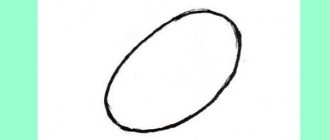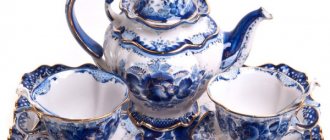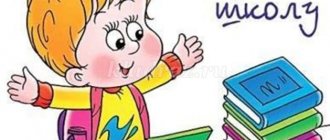GCD in the preparatory speech therapy group Topic: “Transport”
Correctional and educational goals.
- Expanding and consolidating ideas about transport based on generalization of previously formed ideas.
- Clarification, expansion and activation of the dictionary on the topic “Transport”.
- Formation of ideas about types of transport.
- Improving the grammatical structure of speech.
Correctional and developmental goals: development of visual attention and perception, speech hearing, fine and gross motor skills, creative imagination.
Educational goals: developing skills of cooperation, independence, initiative, goodwill.
Equipment: magnetic board, object pictures with images of transport, a container with pencils, a ball, a “noisy picture”, sheets of paper with images of rectangles, a reference table for composing a story.
1. Organizational moment. Game "I have...". (Agreement of nouns with numerals.)
The teacher greets the children, invites them into the office and invites them to stand near the chairs. Each child has an object picture on their chair.
Educator: Look at your pictures, count the vehicles on them. Take turns sitting down and tell them what is shown in your pictures.
1st child: I have two cars.
2nd child: I have five planes.
3rd child: I have five helicopters
4th child: I have two ships.
Educator: Well done! You did an excellent job.
2. Conversation with children about transport while looking at pictures. (Expansion and consolidation of ideas about transport based on the generalization of previously formed ideas. Consolidation of the concepts of “freight” and “passenger” transport. Formation of ideas about types of transport.)
The teacher places pictures on the magnetic board: trolleybus, bus, tram.
Educator: What kind of transport is this?
Children: Passenger transport.
Educator: What is passenger transport needed for?
Children: For transporting passengers.
The teacher places pictures on the magnetic board: truck, dump truck, van.
Educator: What kind of transport do you see?
Children: This is a freight transport.
Educator: Correct. Where does all this transport move?
Children: On the way.
Educator: And that’s why it’s called road transport.
Work is carried out similarly with air, water, rail, and underground transport.
3. Outdoor game “Motor ship” (coordination of speech with movement)
| From the green pier | Step forward, hands down |
| The ship pushed off. | |
| One, two - | Two steps back |
| He took a step back first. | |
| And then he stepped forward - | Two steps forward |
| One, two - | |
| And he swam, swam along the river, | Arms extended forward and closed - |
| Getting into full swing. | This is the bow of the ship. Movement in a circle in small steps. |
4. “Compiling stories based on individual pictures using a reference table” (Development of coherent speech.)
Educator: We named all types of transport. And now, each of you will take one picture and make up your own story and transport according to the table.
The teacher places a reference table on the board, with the help of which each child composes a story based on his individual picture.
Educator: Well done! And now I offer you a new game.
5. Game “Recognize objects” (Development of imagination, visual attention.)
Children are offered a picture depicting “noisy” objects (transport).
Children must recognize and name objects.
6. Game “Draw the rectangles to make a vehicle.” (Development of manual motor skills, visual perception, attention, imagination.)
The teacher gives the children sheets of paper on which rectangles of various sizes and simple pencils are depicted.
Educator: Look, there are drawn rectangles in front of you. Make these rectangles turn into vehicles.
Children complete tasks and then say what they did.
7. Game “What’s extra?” with a ball. (Development of speech hearing.)
The teacher invites the children to go to the carpet and play a game.
Educator: And the last task today. I list the names of the vehicles and throw the ball, and each of you, having caught the ball, determines what is unnecessary and why.
Educator: bus, car, bulldozer.
Child: An extra bulldozer, because... it refers to construction equipment, and a car and a bus are passenger transport.
A similar task is given to each child.
8. End of the lesson: (Assessment of children’s work.)
Children list the tasks they have completed and evaluate each other's work.
Summary of a speech therapy lesson on the topic “Transport”
Summary of a speech therapy lesson in a preparatory group on teaching literacy and developing coherent speech
Topic: "Transport"
Goals:
- clarification and consolidation of knowledge on the lexical topic “Transport”.
- improving the practical use of qualitative adjectives.
- formation of word-formation skills based on exercises in the formation of relative adjectives; in the analysis of words of complex syllabic structure.
- development of coherent speech based on exercises in retelling texts with a cause-and-effect relationship and relying on subject pictures and questions.
- development of attention, memory, visual perception, logical thinking based on exercises in analysis, synthesis, classification, elimination.
Equipment: board, typesetting canvas, bibabo doll Kolobok, pictures-symbols of various types of transport, subject pictures depicting various types of transport, reference pictures for working on the retelling, red and blue hoops, teaching aid “Palette”.
Progress of the lesson:
1. Organizational point:
Standing in a circle, children join hands. Everyone says a few kind words to their neighbor, praises, supports, and reassures. Thank each other for understanding and support. Speech therapist: - Guys, I suggest you go on a journey through a fairy tale. Tell me, what can you use in a fairy tale: - to sail? (on a boat, on a ship...) - fly? (by plane, by helicopter, by hot air balloon...) - go? (by car, by bicycle, by train...) - how would you like to travel through the fairy tale? (children's answers, general choice).
2. Introduction to the topic of the lesson:
Speech therapist: - What can you call a train, a ship, a car? (transport) Name the transport that: - moves only on water (water); - moves only by air (airborne); - transports goods (cargo); -carries passengers (passenger); -moves only by rail (railroad)? Each child is offered a picture depicting one or another type of transport. Picture symbols are displayed on the board, indicating different types of transport (see equipment). Task: find the “house” in the picture.
3. Main part of the lesson:
Speech therapist: - So, today we will travel through a fairy tale, the main character of which is Kolobok. He hurries to tell us something: Kolobok (speech therapist): - One evening I was rolling along the path. Out of boredom I started counting the stars in the sky. Suddenly I see another Kolobok rolling across the sky. I didn’t recognize him and asked: “Who are you?” The heavenly Kolobok is silent. I wanted to get to know each other better, and the heavenly Kolobok came from me.
I’m swinging, I’m in a hurry, and a FIRE HORSE meets me. I began to ask the FIRE HORSE to help me catch up with the heavenly Kolobok, and the FIRE HORSE answered: “Fulfill my tasks, and I will help you.” Children help Kolobok tell what kind of HORSE IS FIRE (beautiful, kind, strong, swift, fire-maned, etc.). Children draw with markers on the board the path of the FIRE HORSE as he gallops quickly; thoughtfully; sad; fun, cheerful.
Kolobok: - I sat on the HORSE-FIRE, but we could not catch up with Kolobok in the sky. I sadly rolled on and then a CAR met me - a FAST TIRE. I asked her for help. CAR - FAST TIRE answers: “Help me, and I won’t be in debt!” Children, together with CAR - FAST TIRE: - correct the mistake in the word car, while reinforcing the rules for writing SHI, ZHI. — make up sentences with the word CAR according to given patterns (sentences of 2, 3, 4 words). - choose the correct sentence:
1) The car stopped because it ran out of gas. 2) The gas ran out because the car stopped. - answer the questions: a) Before getting on the train, I bought a ticket. What did I do first? b) After the traffic light turned green, the pedestrian crossed the street. What did the pedestrian do first?
When the CAR - FAST TIRE drives away, children are asked to remember which of the passengers was sitting first, last, behind the wheel of the car. Kolobok: - Unfortunately, the CAR - FAST TIRE could not help me either. I rolled further, and towards me was a STEAM LOGO - HUNDRED WHEELS. I also began to ask him for help. THE STEAM LOGO – A HUNDRED WHEELS answers: “If you help me, I’ll help you!” Children are asked to identify and name the parts of the locomotive. Then a subgroup of children receives parts of the locomotive and lays out (repairs) the locomotive on a flannelgraph from memory. The second subgroup of children completes the task of finding parts of a steam locomotive. /educational game “Palette”/
Everyone is invited to lay out the sound diagram of the word STEAM LOZO using hoops of the desired color. Kolobok: - I sat down on the STEAM LOGO, the wheels began to rattle, but again I couldn’t catch up with the other Kolobok... I rolled further along the sad path and suddenly I saw a PLANE in the sky - a FAST FLYER. I turned to him for help. PLANE - FAST FLIGHT replies: “Help me first!”
Helping Kolobok and FAST PLANE, the children explain what words make up the word PLANE, HELICOPTER, LUNOKHOD, SCOOTER. — I boarded a FAST PLANE and we flew off to catch up with the heavenly Kolobok. Only the Heavenly Kolobok is ahead again. Here the PLANE is a FAST FLYER and says: “I can’t catch up with him, maybe the ROCKET will help you?” I rolled towards the ROCKET, and she also prepared a task for me: “I’ll help you if you find and tell me what parts I’m made of!” -Children name the letters - the parts of the ROCKET, find them in the magnetic alphabet and make words from the letters. Kolobok: - A ROCKET took off... and then I noticed that the night was over, and the heavenly Kolobok had completely disappeared. That's the end of the fairy tale!
4. Consolidation of acquired knowledge.
Speech therapist: - Did you guess which Kolobok was rolling across the sky? Who helped our Kolobok catch up with the stranger? Children name all the heroes of the fairy tale, and corresponding pictures are displayed. Children retell a fairy tale. Children find the “extra” one among the pictures and explain their choice (all pictures show transport, and a horse is an animal).
5. Summary of the lesson.
Children remember which fairy tale they traveled through, who they met, who they helped and how. The speech therapist invites children to draw their favorite fairy tale characters at home.
Teacher-speech therapist of the State Budgetary Institution GPPC DogM: Tikhonova Elena Sergeevna
Also on topic:
Summary of a lesson on speech development on the topic “Transport”




